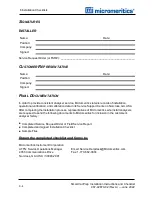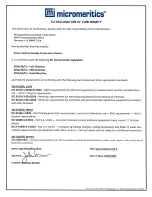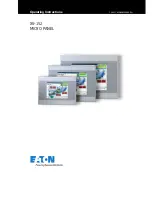
4 G
AS
C
ONNECTIONS
G
UIDELINES FOR
C
ONNECTING
G
ASES
These instructions refer to the installation of a gas line, regulator, and gas cylinder for
each type of gas used. Expansion kits or other accessories may be used in the lab. If
so, special consideration should be given to these configurations when installing the
gas lines.
Improper handling, disposing of, or transporting potentially hazardous materials can
cause serious bodily harm or damage to the instrument. Always refer to the MSDS
when handling hazardous materials. Safe operation and handling of the instrument,
supplies, and accessories is the responsibility of the operator.
n
Place gas cylinders within 6 feet (2 m) of the gas inlets of the analyzer. Place the cylinders
close enough to allow for proper connection at the analyzer inlet.
Using gas line extenders on gas cylinders located in remote areas may degrade gas quality
and reduce pressure. Gas lines are typically five to six feet long.
Long gas lines, such as those used with gas cylinders placed in remote areas, must be
evacuated for an extended period of time to remove ambient gases. When possible, avoid
placing gas cylinders in remote locations. It is always best to have gas cylinders located near
the analyzer.
n
Use a retaining strap (or other appropriate tether) to secure the gas cylinder.
n
Always use the gas lines provided with the analyzer. It is very important that proper gas lines
are used with the analyzer.
o
Do not use
polymer tubing for the gas line.
o
Do not use
flexible gas lines. Some flexible lines may appear to be appropriate, such as
those with a herringbone covering, but the line may be coated internally with a polymer.
n
Carefully route the gas lines from the cylinder to the analyzer avoiding overlapping or
entangling gas lines. This will help avoid confusion when maintenance is required.
n
Label the gas line at the analyzer inlet for proper identification and maintenance.
n
Replace gas cylinders before gas is depleted. It is best to replace a gas cylinder when the pres-
sure reads approximately 500 psi (3500 kPa) on the high-pressure gauge. Contaminants
absorbed to the walls of the cylinder will desorb as the pressure decreases.
n
Ensure the gas cylinder is closed before connecting to the analyzer.
4 Gas Connections
Smart VacPrep Installation Instructions and Checklist
067-42870-02 (Rev A) — June 2022
4 - 1











































